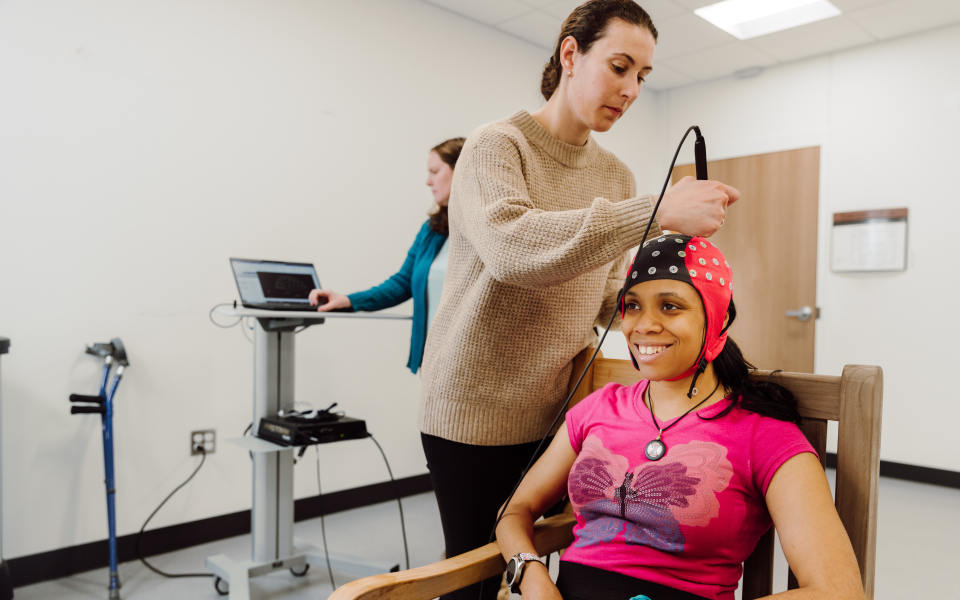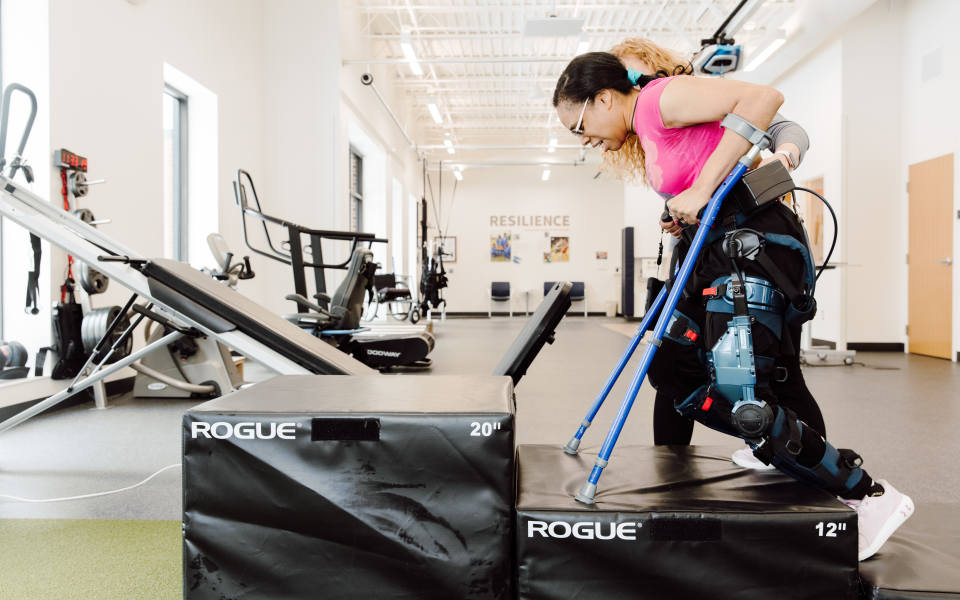What if the science that helps people with cerebral palsy move more easily could also help millions of others? At Boys Town National Research Hospital, researchers use the latest tools to understand how to help people move. One focus is on people with cerebral palsy (CP), a condition that affects the muscles.
“People with cerebral palsy come from across the United States to be in our studies,” said Max Kurz, Ph.D., a scientist at Boys Town National Research Hospital Institute for Human Neuroscience and director of the PoWER Lab — short for Physiology of Walking & Engineering Rehabilitation.
“I really feel that we’re on the leading edge of improving physical therapy for people with CP,” he said.

Inside the Brain
Researchers are always learning more about how muscles work. Dr. Kurz also wants to explore the role of the brain. “To really look at how the brain is working to move the body is a complex problem,” he said.
The PoWER Lab uses some of the most advanced tools. There are MEG (magnetoencephalography) machines — two of only 40 in the U.S. They show what parts of the brain are active and when by measuring tiny magnetic fields.
Dr. Kurz’s research takes the MEG a step further with something called OPM, or optically pumped magnetometry. It uses a special hat with sensors to detect brain activity while moving. “It can tell us what is happening at different stages of a movement,” Dr. Kurz said. “The things you can uncover with it are remarkable.”
One big surprise? The role the spinal cord plays in how people with CP move. “We never would have thought of that because in cerebral palsy the injury is to the brain, not the spinal cord,” Dr. Kurz said. The lab is now studying how painless electrical stimulation affects spinal cord activity during movement.

Behind Each Movement
Another study looks at gait therapy, which is physical therapy focused on improving walking. One tool being used is a device that looks like robotic pants. “It can help you learn how to plan your actions and increase what you feel during movement,” Dr. Kurz said.
The team is also studying whether virtual coaching and wearable step trackers can help increase daily step count for people with CP. “We’re coaching them on how to see and solve barriers to getting moving,” he said.
The lab’s work isn’t just about walking. They also study how to help people get in and out of wheelchairs on their own, for example.
“Our bigger goal is to design physical therapy that’s individualized — because no two people are the same. Some people don't respond well, while others have big breakthroughs. We’re using brain science to help create therapies that work for each person,” Dr. Kurz said.
He refers to the patients in the CP studies more like collaborators. “They tell us what’s working and what’s hard for them. It gives them a voice in the things we are trying to tackle.”
What Dr. Kurz’ team discovers could improve how physical therapy is used, not only for CP, but for all kinds of conditions.
“The [research] that we're doing will lead to more personalized strategies,” he said. “That can increase how well physical therapy works and make it more cost effective for everyone.”
To learn more about Dr. Kurz’s current research studies, visit the PoWER Lab webpage.